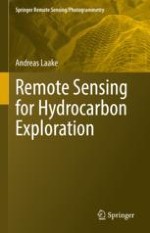2022 | OriginalPaper | Buchkapitel
6. Rendering of Remote Sensing Data
verfasst von : Andreas Laake
Erschienen in: Remote Sensing for Hydrocarbon Exploration
Aktivieren Sie unsere intelligente Suche, um passende Fachinhalte oder Patente zu finden.
Wählen Sie Textabschnitte aus um mit Künstlicher Intelligenz passenden Patente zu finden. powered by
Markieren Sie Textabschnitte, um KI-gestützt weitere passende Inhalte zu finden. powered by
